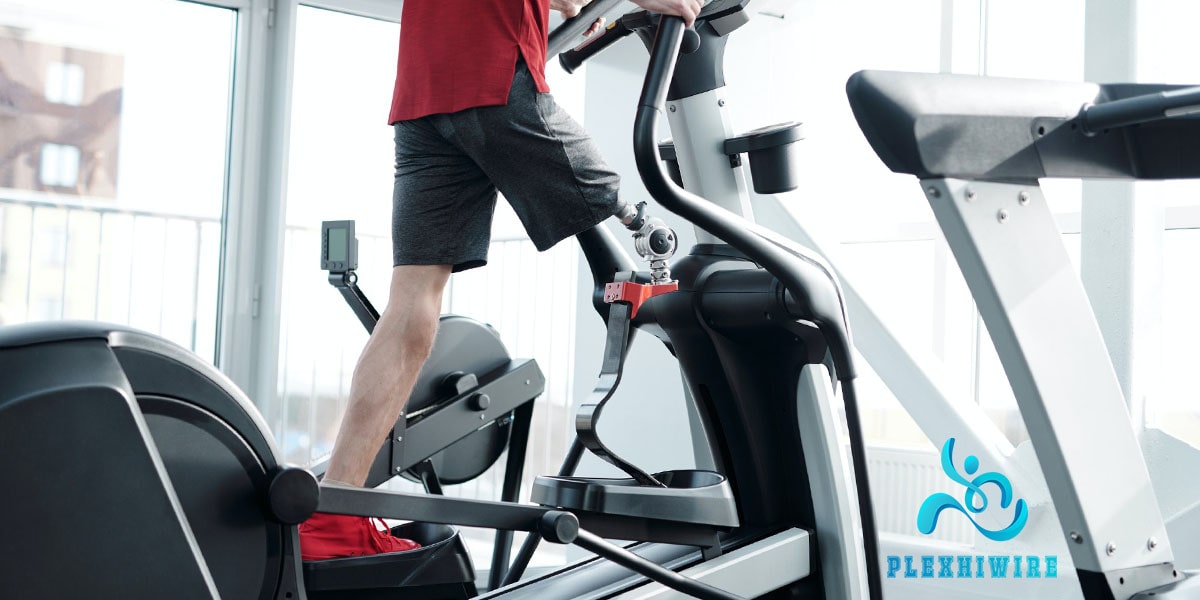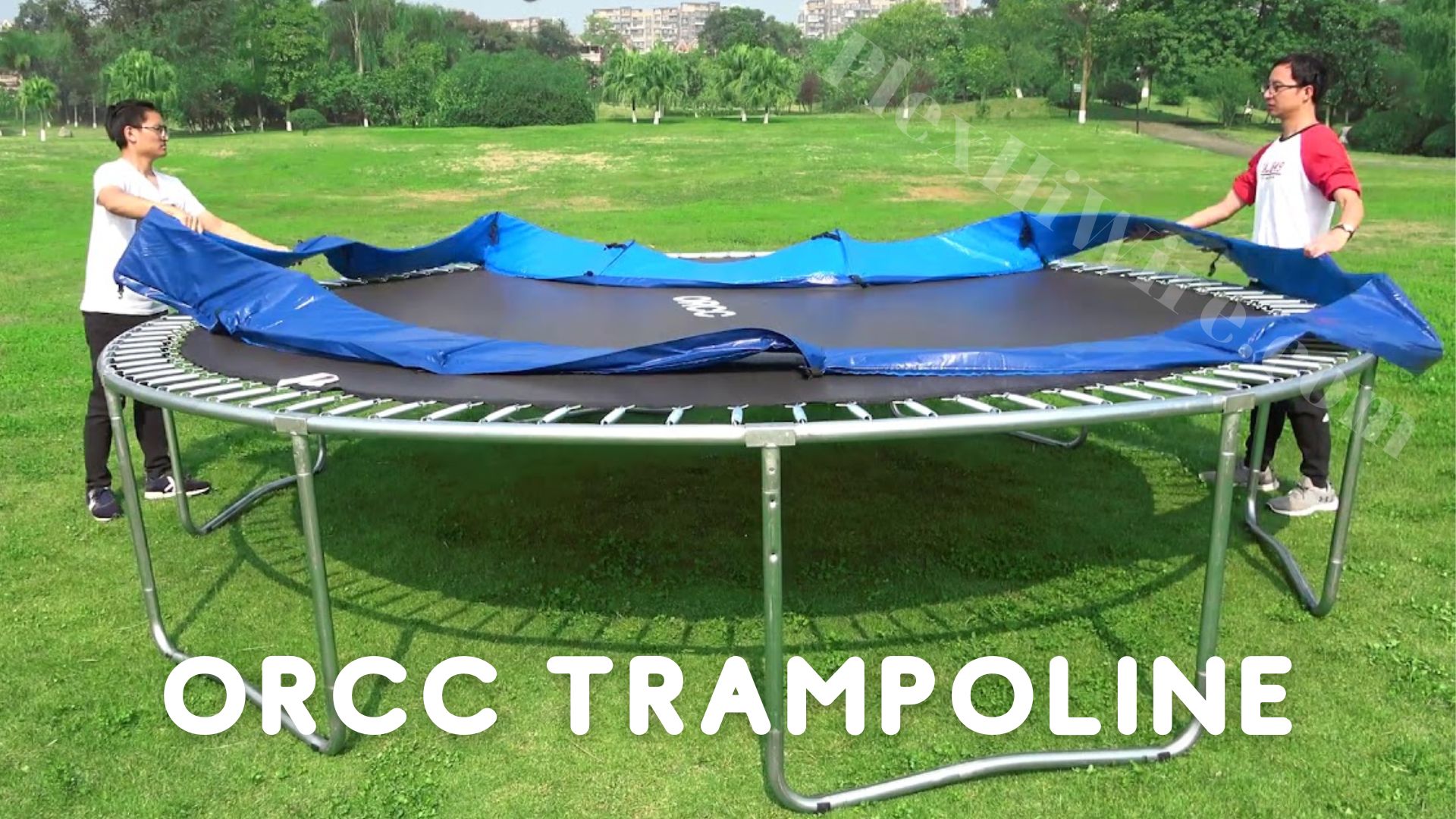How to Remove Bike Cranks Indoor
Do you have an indoor bike that isn’t performing as well as it used to? If so, then it looks like it’s time for a little tune-up! Fortunately, there’s no need to let an unexpected indoor bike problem ruin your fun. One of the most common issues that cyclists face indoors is removing bicycle cranks from drivetrains for maintenance and repairs but with the right tools and know-how, this process can be relatively simple and straightforward. A key component of any bicycle maintenance is removing and inspecting the crank arms. This simple procedure can improve your ride quality and enhance your cycling experience. In this blog post, we’ll discuss why removing bike cranks indoors is important, walk through the process step-by-step, and provide some helpful tips for getting the job done safely.
One of the most important tasks for any bicycle enthusiast is understanding how to remove bike cranks indoors safely and efficiently. However, taking apart your bike’s crankset is a messy job that can often leave you feeling frustrated. As an avid cyclist, you want to maintain the smoothness and durability of your bike’s components, but from time to time they require some maintenance or upgrading. Removing the crank arms indoors may not be as daunting as it seems; with the right tools and techniques, you can quickly remove indoor bike cranks without making a mess. Whether you are a beginner or an experienced rider, learning techniques for managing small tasks like removing cranks indoors will prove invaluable over time. Keep reading to gain insight into the process of properly and completely removing bike cranks!
- How to Remove Bike Cranks Indoor
- What is a Bike Crank?
- Why Remove Bike Cranks Indoors?
- What are the Benefits of Removing Bike Cranks Indoors?
- What Tools Will You Need to Safely Remove Indoor Bike Cranks?
- What Should You Consider Before Removing Bike Cranks Indoors?
- How to Remove Bike Cranks Indoor Safely
- How Long Does It Take to Remove Indoor Bike Cranks?
- Is There a Risk of Damage to Your Indoor Bike If Not Properly Removed?
- What Type of Replacement Crank is Best for Your Indoor Bike?
- What Regular Maintenance is Needed for Your New Crank?
- How Do I Prevent Scratches When Removing Bike Cranks Indoors?
- Frequently Asked Questions
- Conclusion
What is a Bike Crank?
An indoor bike crank is an essential component of a stationary bicycle that converts the rider’s pedaling motion into rotational force to move the flywheel. Typically, it consists of a metal arm that connects the pedals to the bike’s drive chain or belt. The crank arm is attached to the pedal spindle and rotates around a central axis, which is also connected to the bike’s bottom bracket.
Indoor bike cranks come in various lengths, typically ranging from 165mm to 180mm, to accommodate riders of different sizes and cycling preferences. The length of the crank affects the biomechanics of the pedaling motion, as it changes the angle of the rider’s hips and knees, affecting the power and efficiency of the pedal stroke.
Modern indoor bike cranks are made of durable materials such as carbon fiber or aluminum alloy, which are both strong and lightweight. They also feature advanced designs that enhance their aerodynamics, stiffness, and transfer of power from the rider’s legs to the flywheel. Some popular types of indoor bike cranks include standard cranks, compact cranks, and sub-compact cranks, each with its own benefits and drawbacks.
Overall, an indoor bike crank is a vital part of a stationary bike that impacts the rider’s performance and comfort. A good crank should match the rider’s physiology, preferences, and fitness goals, and provide a smooth and efficient pedaling experience. With the right indoor bike crank, riders can achieve their fitness objectives, improve their cardio, and enjoy the experience of indoor cycling.
Why Remove Bike Cranks Indoors?
Bike cranks are important components of a bicycle’s drivetrain system that transmit the rider’s pedaling force to the chain and, ultimately, the rear wheel. However, there are several reasons why one may need to remove bike cranks indoors.
One common reason is for maintenance or repair purposes. Over time, bike cranks can become worn, damaged, or loose, leading to issues with shifting, pedaling efficiency, or even safety.
Another reason for removing bike cranks indoors is for customization or upgrades. Cyclists may want to replace their cranks with different sizes, lengths, materials, or styles to suit their preferences, goals, or riding conditions. By doing this indoors, they can take their time, use specialized tools, and experiment without being exposed to the elements or public scrutiny. This can enhance the bike’s performance, comfort, or aesthetics, and make the cycling experience more enjoyable and rewarding.
Furthermore, removing bike cranks indoors can also be a way to learn more about the bike’s mechanics and gain technical skills. By watching tutorials, reading manuals, or consulting with bicycle experts, cyclists can understand how the cranks work, how to install and remove them correctly, and how to troubleshoot common issues. This can empower them to take better care of their bikes, diagnose problems more accurately, and even share their knowledge with others.
View more: How to Teach a Kid to Ride a Bike Indoor
In summary, removing bike cranks indoors is a crucial aspect of maintaining and repairing a bicycle. It allows for easy access to components, routine maintenance, and a controlled environment for working on the bike. By taking the time to remove bike cranks indoors, cyclists can ensure the longevity and efficiency of their bikes, ultimately leading to a smoother and more enjoyable riding experience.
What are the Benefits of Removing Bike Cranks Indoors?
Bike maintenance is an essential aspect of ensuring that your ride remains in top-notch condition. It helps increase the lifespan of your bike and provides an enjoyable and efficient cycling experience. One crucial aspect of bike maintenance is removing bike cranks. The bike crankset plays a vital role in the transfer of power from the pedals to the wheel. Therefore, removing bike cranks is critical in performing various bike repairs such as chain replacement, cleaning, and other bike adjustments.
There are several benefits of removing bike cranks indoors, including increased safety and convenience. When bike cranks are removed indoors, it eliminates the need to support your bike while removing the cranks. You can easily secure your bike frame, making it less likely to fall or tip over. This provides a safer and more comfortable environment, especially for those who may not have a lot of experience with bike maintenance.
Removing bike cranks indoors also means that you can perform necessary repairs in a comfortable and convenient environment. Indoor workshops are typically equipped with the necessary tools, bike stands, and lighting to ensure you have a smooth and efficient repair experience. This also means that you can perform repairs year-round, regardless of weather conditions, without having to set up an outdoor workstation.
Additionally, removing bike cranks indoors makes it possible to perform repairs at any time of the day or night. This provides more flexibility, especially for individuals who have busy schedules and cannot take their bikes to a bike repair shop during regular business hours.
Another benefit of removing bike cranks indoors is that it allows you to work on your bike at your own pace, without the pressure of time constraints or interruptions. This is critical when performing more complex bike repairs that may take several hours to complete.
Removing bike cranks indoors provides several benefits, including increased safety, convenience, comfort, and flexibility. It helps make bike maintenance more accessible and less intimidating, empowering individuals to perform their repairs and ensure that their bikes remain in optimal condition. Therefore, it is essential to consider investing in an indoor bike workshop or workspace if you enjoy cycling or owning a bike.
What Tools Will You Need to Safely Remove Indoor Bike Cranks?
When it comes to removing indoor bike cranks, it’s important to have the right tools to ensure a safe and successful removal process. The specific tools you will need may vary depending on the make and model of your indoor bike, so it’s important to do your research and make sure you have all the necessary equipment before getting started.
One essential tool for removing indoor bike cranks is a crank puller. This tool is designed to remove the crank arms from the bottom bracket spindle and typically has a threaded rod that screws into the spindle to loosen and remove the cranks. There are different types of crank pullers available, so be sure to choose one that is compatible with your indoor bike.
Another useful tool for removing indoor bike cranks is a wrench set. You may need different types of wrenches to loosen and remove the bolts and nuts holding the crank arms in place, so it’s important to have a set of wrenches with a variety of sizes and types.
In addition to these specific tools, you may also need other general bike maintenance tools such as pliers, hex keys, and lubricant. Having these tools on hand can help make the removal process smoother and easier, and can also help prevent damage to your indoor bike.
Overall, having the right tools for removing indoor bike cranks is crucial for ensuring a safe and successful removal process. Be sure to do your research, choose the appropriate tools for your bike, and follow proper safety procedures to avoid injury and damage to your equipment.
What Should You Consider Before Removing Bike Cranks Indoors?
When it comes to removing bike cranks indoors, there are a few important factors that should be taken into consideration to ensure that the process is carried out safely and efficiently.
First and foremost, it is important to have the right tools and equipment on hand. This may include a crank puller tool, which is used to remove the crank arms from the bottom bracket spindle, as well as a torque wrench to properly tighten the cranks when they are reinstalled.
Before beginning the process of removing the cranks, it is also important to take some measures to protect both the bike and the surrounding environment. This may involve laying down a protective mat or tarp to catch any loose parts or debris that may fall during the process, as well as ensuring that the bike is securely situated in a bike stand or other stable location to prevent it from toppling over.
Another important consideration is the potential impact that removing the cranks may have on the bike’s warranty or structural integrity. Some manufacturers may void the warranty if the cranks are removed by anyone other than an authorized dealer or mechanic, while poorly executed crank removal can result in damage to the bottom bracket or frame, causing long-term mechanical problems.
Moreover, it is important to follow the manufacturer’s instructions carefully, as different bike models and components may require slightly different procedures for removing and installing cranks. This is especially important with regard to the torque specs for tightening the crank arm bolts, which can have a major impact on the overall performance of the bike.
Removing bike cranks indoors is a task that requires careful preparation, attention to detail, and the right tools and equipment to ensure that it is carried out safely and efficiently. By considering these important factors and taking the necessary precautions, bike enthusiasts can successfully remove and reinstall cranks without causing any damage to the bike or putting themselves at risk of injury.
How to Remove Bike Cranks Indoor Safely
As cycling enthusiasts, we all know the importance of regular bike maintenance, whether it’s changing tires, adjusting brakes, or removing cranks. If you’re an avid indoor cyclist and you’re looking to switch out your bike’s cranks for a new set, pay heed to our following instructions on how to remove cranks from your bike indoors.
Firstly, make sure you have the necessary tools handy. You’ll need a crank puller, which is a specialized tool designed to remove crank arms from a bike’s axle, a wrench, and a rubber mallet. Once you’ve ensured you have everything necessary, prop your bike against a sturdy surface, such as a wall or bike stand.
Next, remove the dust caps from the crank arms, exposing the bolts that hold the crank arms to the chainring. Using the appropriate size wrench, loosen the bolts. You may need to use a bit of force, especially if the bolts have been in place for an extended period or are rusted.
Once you’ve removed the bolts, thread the crank puller tool into the crank arm to remove it from the bike’s axle. You’ll need to use a rubber mallet to carefully knock the back of the crank puller tool to loosen the arm from the axle.
Finally, pull the crank arm away from the bike’s frame. Repeat the entire process for the other crank arm until both sets of cranks are removed. Once you’ve completed the removal process, clean any dirt or debris from the bike’s crankset and prepare for the installation of your new cranks.
The process of removing cranks from a bike indoors might seem like a daunting task, but it’s a relatively simple process with the right tools and knowledge. By following the steps outlined above, you’ll successfully remove your bike’s cranks in no time, allowing you to upgrade your cycling experience with new and improved equipment.
How Long Does It Take to Remove Indoor Bike Cranks?
Indoor cycling has gained a lot of popularity in recent years, more and more people are now purchasing indoor bikes for their home gyms. Over time, regular upkeep and maintenance are required to keep these bikes functioning optimally, and one of the tasks that may be required is the removal of bike cranks.
Bike cranks are the arms of the bike that connect the pedals to the bottom bracket, and they may need to be removed to replace the chain or the chainrings. The time it takes to remove indoor bike cranks varies depending on several factors such as the type of bike, the tools available, and the experience level of the mechanic.
Know more: Unlock Your Fitness Goals With an Exercise Bike Screen
On average, it takes about 30-60 minutes to remove indoor bike cranks. However, this may take longer for beginners or for those who are unfamiliar with the process. Additionally, some types of indoor bikes may require special tools to remove the cranks, which may add to the time needed.
Removing indoor bike cranks is an essential task for maintaining the functionality of the bike. While the time it takes to complete the process may vary, it is important to follow the appropriate steps and use the right tools to ensure the task is done properly.
Is There a Risk of Damage to Your Indoor Bike If Not Properly Removed?
Nowadays, many people have invested in indoor bikes to help them stay fit and healthy. However, as much as indoor bikes provide excellent workouts, they require proper handling and maintenance, failing which they could be damaged.
One of the most critical aspects of proper management of indoor bikes is removing them from their storage space. Incorrect handling of the bike during removal could cause it to take damage, resulting in long-term negative consequences, including reduced performance and shorter lifespan. Therefore, it is essential to know how to remove the indoor bike properly to avoid damaging it.
A common mistake that people make when removing their indoor bikes is to lay them down on one side or lean them against a wall. Both of these methods can cause damage to the bike’s frame, handlebars, pedals, and wheels. A bike should be lifted and carried from the bottom of the frame, and when in doubt, it’s best to seek help from a professional.
Another factor to consider when removing an indoor bike is the location. If it is sitting on a carpet, it’s best to put a mat or cardboard underneath the bike before lifting it to reduce the chance of damage. If the bike is located in a small space, it is essential to measure the height and width of the doorways to ensure it will fit through them without getting stuck.
So, improper removal of your indoor bike can lead to damage to its frame, pedals, handlebars, and wheels. To avoid this risk, it is essential to take the necessary precautions when trying to move the bike. Consult your bike’s manufacturer guidelines to determine the best way to remove and transport the bike, or contact a professional for help. By following these measures, you can maintain your indoor bike’s top-quality performance and durability for a long time.
What Type of Replacement Crank is Best for Your Indoor Bike?
When it comes to maintaining and upgrading your indoor bike, you have a lot of options to consider. One important component to pay attention to is the crank, which connects the pedals to the bike’s drivetrain. If your crank is worn out or damaged, it’s crucial to replace it in order to keep your bike functioning properly.
So, what type of replacement crank should you choose? There are a few key factors to consider. First and foremost, you need to make sure that the replacement crank is compatible with your bike’s make and model. Different brands and models may have different crank sizes, shapes, and attachment mechanisms, so it’s important to do your research and choose a replacement that will fit seamlessly with your particular bike.
Another important consideration is the material of the replacement crank. Cranks can be made from a variety of materials, including aluminum, carbon fiber, and steel. Each material has its own strengths and weaknesses, so it’s important to choose a replacement crank that is not only compatible with your bike but also aligns with your personal preferences. For example, aluminum cranks are lightweight and durable, but may not be as stiff as steel or carbon fiber options.
In addition to material and compatibility, you’ll also want to consider the length of the replacement crank. The length of the crank can affect the length of your pedal stroke, which can in turn impact your comfort and efficiency while riding. Generally speaking, shorter cranks are best for riders with shorter inseams, while longer cranks may be more comfortable for taller riders. However, this can vary based on personal preference and riding style.
Ultimately, the best replacement crank for your indoor bike will depend on a variety of factors, including compatibility, material, and length. By doing your research and considering your personal preferences, you can select a high-quality replacement crank that will help you get the most out of your indoor cycling workouts.
What Regular Maintenance is Needed for Your New Crank?
Regular maintenance is a critical aspect of ensuring the longevity and optimal performance of your new crank. A series of steps need to be taken frequently to ensure that your crank is in the best possible shape. First and foremost, it is essential always to keep your crank clean and free of dirt and debris. Dirt buildup can cause extensive wear and tear on your crank, leading to issues down the line.
Another critical aspect of maintaining your new crank is to regularly lubricate it. Lubrication is critical to prevent any squeaking or binding, leading to smoother movements, and reducing the wear and tear of the parts. You should use high-quality lubricants specifically designed for cranks, and it is advisable to clean and reapply the lubricant every few weeks.
Additionally, it is essential to check for any wear or damage to the crank periodically. Common signs of wear include loose pedal threads, worn-down teeth, or other physical damage. Always keep a lookout for these signs to prevent any damage from occurring or worsening.
Furthermore, it is crucial to ensure the bolts are tightened to their recommended torque specifications to prevent any loosening or damage to the crank. It’s also imperative to check for any cracks or defects regularly. Any detectable faults must be immediately repaired or replaced to ensure the safety and reliability of the crank.
Regular maintenance and care of your new crank are essential to ensure it performs optimally, lasts longer, and provides a safe and smooth experience. Keep it clean, lubricated, inspect it regularly for any wear or defects, and be vigilant for any signs of damage. Following these maintenance practices help maintain your crank’s optimal performance and longevity.
How Do I Prevent Scratches When Removing Bike Cranks Indoors?
When removing bike cranks indoors, it is essential to take the necessary precautions to prevent scratches. Scratches, nicks, and scuffs on your bike can be not just unsightly, but also potentially damaging to its value. Scratches on the frame, bottom bracket, or crank arms can also make it more challenging to facilitate smooth riding. Fortunately, there are several measures you can take to prevent scratches and ensure that you take excellent care of your bike.
First and foremost, you should utilize specialized tools designed precisely for bike maintenance. Such tools include bike stands and pedal wrenches that are designed to facilitate the smooth and safe removal of cranksets. These tools help you avoid using force or excessive pressure, which can make the process more challenging and lead to scratches or other damage to the bike’s surface.
Secondly, it is also essential to avoid using harsh or abrasive cleaners, especially on painted surfaces like the frame. You can use soft sponges or microfiber cloths to gently clean the bike, ensuring that you do not rub or scratch the surface. Additionally, you should avoid using steel wool or any other abrasive cleaning agents.
Another great way to prevent scratches is by using protective covers. You can invest in specialized bike frame protectors that come in various shapes and sizes, such as frame tape, dent protectors, or bottom bracket protectors. These protective covers shield your bike’s surface from chips, dings, and scratches, therefore prolonging its life and enhancing its resale value.
Scratches on a bike can be a significant headache, but they can be prevented by taking the necessary precautions. Utilizing specialized tools, avoiding harsh cleaners, and using protective covers are all great ways to ensure your bike stays looking as good as new even after removing its cranks. By taking these essential measures, you can enjoy a scratch-free bike for years to come.
Frequently Asked Questions
What Size Allen Key Do I Need to Remove My Bike Cranks?
Are you looking to remove your bike cranks but unsure which size Allen key to use? Don’t worry, as most cranks typically require a 4mm-8mm Allen key. It’s important to find the correct size to prevent damaging the screw and ensure a smooth removal process. If you’re unsure of the exact size, consult your bike’s manual or visit a local bike shop for assistance. With the right tool in hand, you can easily remove your bike cranks and get back to riding in no time.
How Do I Keep the Bike Cranks from Rusting?
Bike cranks are an essential part of your bicycle’s gear system and they require regular maintenance to ensure they perform optimally. One common problem that can occur is rusting, which can affect the performance of your bike and cause damage over time. To prevent this from happening, it is important to keep your bike cranks dry and sheltered from the elements. When you’re not using your bike, try to store it in a dry and covered space, away from moisture and dampness. This will help prevent rust and prolong the lifespan of your bike’s cranks. Additionally, be sure to regularly inspect your bike for any signs of rust or wear and address them promptly to keep it running smoothly for years to come.
Conclusion
Removing your bike cranks indoors is a great way to make sure your bike is running correctly and in a safe environment. With the right tools and a bit of knowledge, anyone can do it with little fuss. Regardless, the process is not difficult or expensive and can be done easily by most people. If you follow these steps precisely and with consideration, you should find this task less daunting and more enjoyable than you initially expected. As always if you are having trouble or unsure about something ask for help or advice from a professional mechanic – they’ll be more than happy to help!
Learning how to remove bike cranks indoors can be a great asset in your arsenal of bicycle maintenance skills. Although it isn’t the easiest job, with the right tools and knowledge, you can do it yourself and avoid having to take your bike to a bike shop. Hopefully, you found this article helpful and empowering in understanding that you don’t have to be an expert at bike repair to accomplish basic tasks such as removing the cranks from your indoor bike. Whenever you’re feeling adventurous and want to give it a go, simply follow the steps outlined above and practice makes perfect.
To keep your indoor bicycle cycling smoothly, regularly check that the cranks are clean and tight and give them an occasional inspection by removing them to make sure everything is working according to plan. While the process may seem daunting, it’s essential if your bike is going to be able to keep up with regular use. Taking care of this part of your bike now will save you money down the line if any issues arise due to neglect. So, inspect those cranks, and get back on that bike in no time!s








